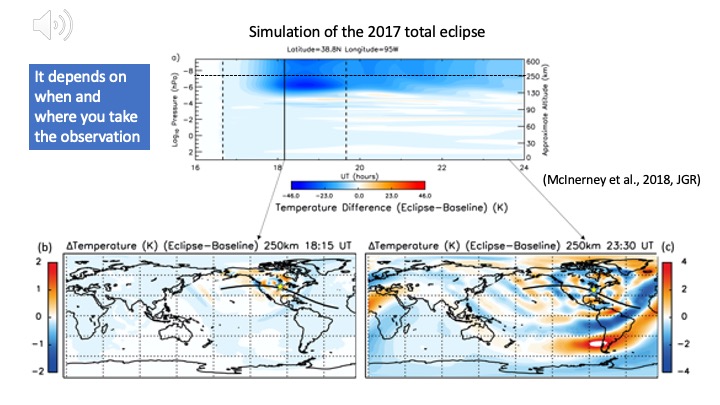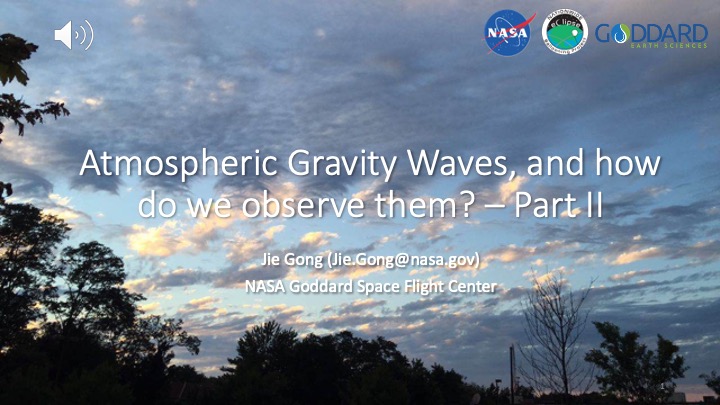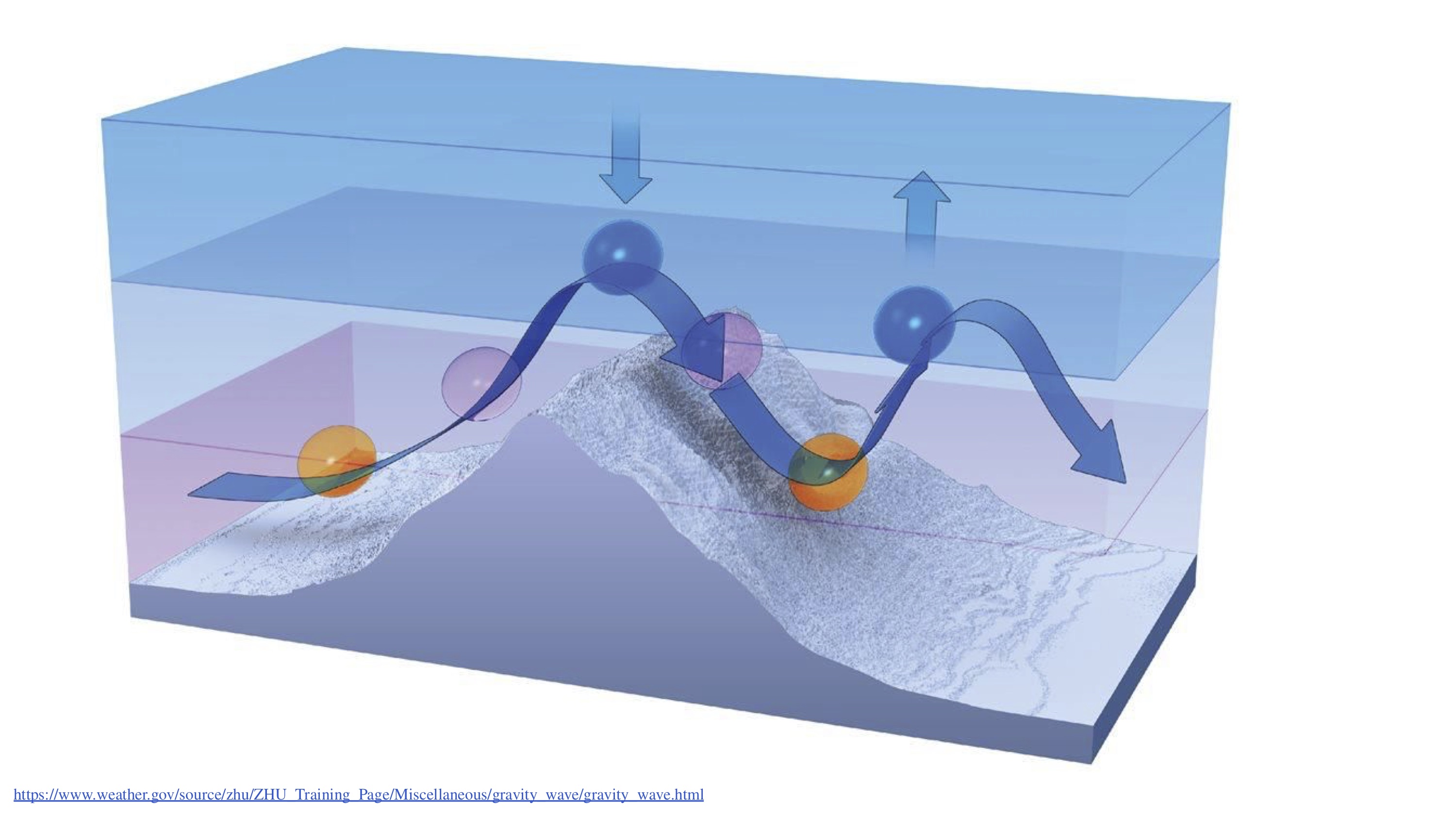Lesson 9: Gravity Wave Observations
Overview of the content
Learning objectives
After completing this lesson, students will
- Understand major observational techniques for detecting atmospheric gravity waves (AGWs)
- Understand basic concept of satellite retrieval
- Gain basic knowledge of how to derive AGW properties from radiosonde observations
- Understand why solar eclipse can generate AGWs and why we want to use radiosonde to study eclipse-AGWs.
Background information for the instructor
No background information is requiired, but we defiiinitely recommend reading the slides and watching the video if you plan to teach this lesson.
Video content

Atmospheric Gravity Waves, Part 2 by Dr. Jie Gong (YouTube, 55:28)
- The video content is closed captioned.
Slides or handouts

Download the slide deck for the above video in Powerpoint
Download the slide deck for the above video in PDF
[both files are included as alternative downloads to assist the instructor; all content is the same as the YouTube video above]
Additional optional readings / articles
- Alexander et al. (2010), QJRMS, https://doi.org/10.1002/qj.637
- Colligan et al. (2020), Sci. Rep., https://doi.org/10.1038/s41598-020-75098-2
- Eckermann (1996), JGR, https://doi.org/10.1029/96JD01578
- Gong and Geller (2010), JGR, https://doi.org/10.1029/2009JD012265
- Gong et al. (2015), JGR, https://doi.org/10.1002/2014JD022527
- Kim et al. (2003), Atm. Ocn., 10.3137/ao.410105
- Marlton et al. (2016), PTAMPES, https://doi.org/10.1098/rsta.2015.0222
- McInerney et al. (2018), JGR, https://doi.org/10.1029/2018GL077723
- Moffat-Griffin et al. (2020), GRL, https://doi.org/10.1029/2020GL089740
- Nayak and Yigit (2017), JGR, https://doi.org/10.1002/2017JA024845
- Perrett et al. (2020), GRL, https://doi.org/10.1029/2020GL088621
- Wright et al. (2016), AMT, https://doi.org/10.5194/amt-9-877-2016
Students who wish to learn more about gravity waves from the NEBP engineering track perspective can watch this video created by the engineering track - [YouTube video, 35:09. Closed captioned, transcript available]
Discussion questions for class
From gravity wave measurement perspective, what are your suggestions for the planning for (1) site locations (2) launch frequency (3) launch window (i.e., start and ending time with respect to the totality).
NOTE: This question has no right or wrong answer, but encourages students to provide their suggestions for site locations with regard to the eclipse path, and provide their justification.
Homework / extended learning questions
- In the La Soufriere volcano eruption video, one can see the structures of cloud/smoke: can you circle out areas that you think are modulated by gravity waves? (hint: colors are from infrared channels, with red/yellow being warm and green/blue being cold)
- Do you think atmospheric gravity waves are usually linearly or circularly polarized? Why?
- Is sunlight polarized?
- What type of gravity waves are single radiosonde profiles particularly sensitive to?
- (A) Long vertical wavelength, short horizontal wavelength, vertically propagating ones
- (B) Long vertical wavelength, long horizontal wavelength ones
- (C) Short vertical wavelength, long horizontal wavelength, slantwisely propagating ones
- (D) Short vertical wavelength, short horizontal wavelength, small ones
- Our 2017, 2019 and 2020 solar eclipse campaigns all launch balloons hourly. If we make a time series, what is the smallest wave period can it resolve? In 2024, we aim at 15 minutes cadence at some sites. What is the smallest wave period can we resolve if we are successful?
![]() Don't forget to track today's progress in your portfolio
Don't forget to track today's progress in your portfolio
Will you take a few minutes to give us some feedback on this lesson? Thank you!
Course home page // Next lesson >>

